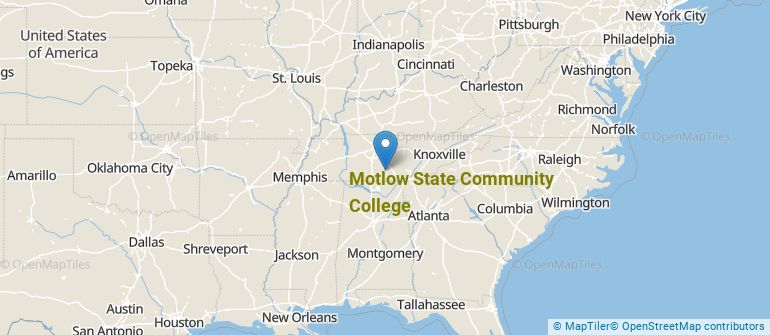 by our College Data Analytics Team
by our College Data Analytics TeamExplore the best ranked schools for the programs you are most interested in.
College Factual ranked Motlow as #1,761 out of 2,152 colleges and universities in the country on its 2025 Best Colleges list. This is an improvement over the previous year, when Motlow held the #1,884 spot on the Best Overall Colleges list.
Out of the 41 colleges in Tennessee, Motlow is ranked at #34.
Returning adults and other non-traditional students may appreciate the fact that Motlow State Community College has an open admissions policy. This means that you'll only have to submit basic materials, which may include proof that you completed high school or an equivalent program.
The student to faculty ratio at Motlow State Community College is 23 to 1, which is high when compared to the national average of 15 to 1. This may indicate that some of your classes will be larger in size than they would be at other schools. However, upper level classes will probably be smaller.
In addition to the student to faculty ratio, some people look at what percentage of faculty members are full-time as a sign of how much time professors will be able to spend with their students. This is because part-time teachers may not be be on campus as much as their full-time counterparts.
The full-time faculty percentage at Motlow State Community College is 51%. This is comparable to the national average of 47%.
The freshmen retention rate is a sign of how many full-time students like a college or university well enough to come back for their sophomore year. At Motlow State Community College this rate is 52%, which is a bit lower than the national average of 68%.
During the 2017-2018 academic year, there were 6,616 undergraduates at Motlow with 3,127 being full-time and 3,489 being part-time.
| $0-30 K | $30K-48K | $48-75 | $75-110K | $110K + |
|---|---|---|---|---|
| $9,401 | $10,358 | $11,215 | $11,349 | $14,852 |
The net price is calculated by adding tuition, room, board and other costs and subtracting financial aid.Note that the net price is typically less than the published for a school. For more information on the sticker price of Motlow, see our tuition and fees and room and board pages.
The student loan default rate at Motlow is 6.0%. This is significantly lower than the national default rate of 10.1%, which is a good sign that you'll be able to pay back your student loans.
Get more details about paying for Motlow State Community College.

See which majors at Motlow State Community College make the most money.
Get more details about the location of Motlow State Community College.

Contact details for Motlow are given below.
| Contact Details | |
|---|---|
| Address: | 6015 Ledford Mill Road, Tullahoma, TN 37388 |
| Phone: | 931-393-1500 |
| Website: | www.mscc.edu/ |
| Most Popular Majors | Bachelor’s Degrees | Average Salary of Graduates |
|---|---|---|
| Liberal Arts General Studies | 789 | NA |
| Electromechanical Engineering Technology | 72 | NA |
| Allied Health Professions | 71 | NA |
| Nursing | 54 | NA |
| Business Administration & Management | 27 | NA |
| General Education | 27 | NA |
| Computer Information Systems | 13 | NA |
| Clinical/Medical Laboratory Science | 12 | NA |
| Entrepreneurial Studies | 3 | NA |
| Human Development & Family Studies | 2 | NA |
Online learning options are becoming more and more popular at American colleges and universities. Online classes are great for students who have busy schedules or for those who just want to study on their own time.
In 2022-2023, 3,924 students took at least one online class at Motlow State Community College. This is a decrease from the 4,452 students who took online classes the previous year.
| Year | Took at Least One Online Class | Took All Classes Online |
|---|---|---|
| 2022-2023 | 3,924 | 2,218 |
| 2021-2022 | 4,452 | 2,506 |
| 2020-2021 | 5,166 | 3,738 |
| 2018-2019 | 2,960 | 1,153 |
Learn more about online learning at Motlow State Community College.
Footnotes
*The racial-ethnic minorities count is calculated by taking the total number of students and subtracting white students, international students, and students whose race/ethnicity was unknown. This number is then divided by the total number of students at the school to obtain the racial-ethnic minorities percentage.
References
More about our data sources and methodologies.